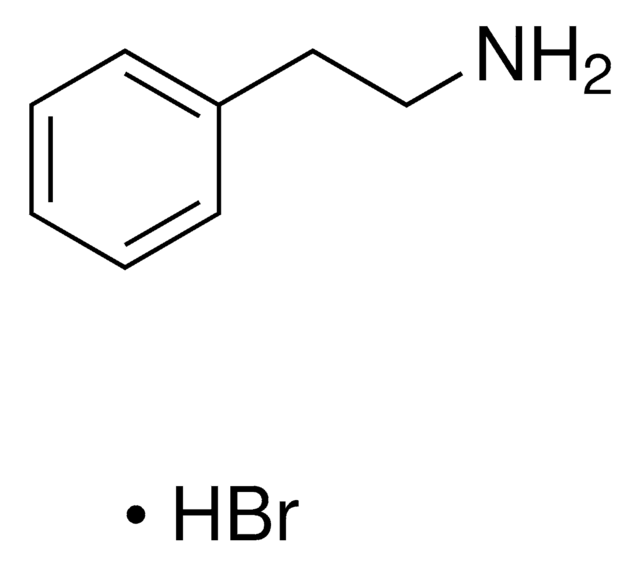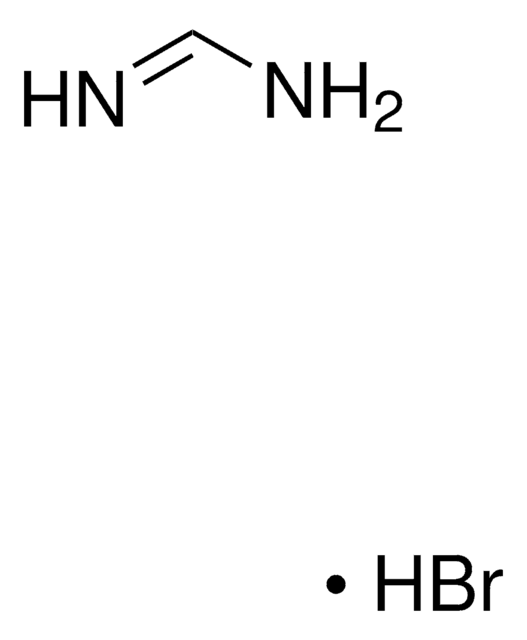203017
Cesium bromide
99.999% trace metals basis
Sinónimos:
Cesium monobromide
About This Item
Productos recomendados
Nivel de calidad
Análisis
99.999% trace metals basis
formulario
powder and chunks
impurezas
≤15.0 ppm Trace Metal Analysis
mp
636 °C (lit.)
densidad
4.44 g/mL at 25 °C (lit.)
cadena SMILES
[Br-].[Cs+]
InChI
1S/BrH.Cs/h1H;/q;+1/p-1
Clave InChI
LYQFWZFBNBDLEO-UHFFFAOYSA-M
¿Está buscando productos similares? Visita Guía de comparación de productos
Descripción general
Aplicación
- An electrolyte additives to improve the cycling efficiency of lithium and graphite anodes in lithium-ion batteries. The cesium cations can help control the interfacial chemistry on the anode, leading to enhanced performance.
- An additive to enhance the efficiency and stability of CsPbI2Br perovskite solar cells by passivating defects, improving charge transport properties, and contributing to higher power conversion efficiencies.
- As a precursor material to synthesize cesium lead bromide (CsPbBr3) perovskite, which is then utilized as an electrode material in a symmetric supercapacitor.
- As a precursor to prepare thermal neutron imaging plates.
- As a precursor to synthesize lead-free CsBr: Eu2+ nanocrystals for fabricating white LEDs.
- As an additive to prepare CsI-based scintillators. Alloying with cesium bromide increases the yield limit and microhardness of CsI crystals.
Palabra de señalización
Warning
Frases de peligro
Consejos de prudencia
Clasificaciones de peligro
Acute Tox. 4 Oral - Aquatic Acute 1 - Repr. 2
Código de clase de almacenamiento
13 - Non Combustible Solids
Clase de riesgo para el agua (WGK)
WGK 3
Punto de inflamabilidad (°F)
Not applicable
Punto de inflamabilidad (°C)
Not applicable
Equipo de protección personal
dust mask type N95 (US), Eyeshields, Gloves
Elija entre una de las versiones más recientes:
¿Ya tiene este producto?
Encuentre la documentación para los productos que ha comprado recientemente en la Biblioteca de documentos.
Los clientes también vieron
Nuestro equipo de científicos tiene experiencia en todas las áreas de investigación: Ciencias de la vida, Ciencia de los materiales, Síntesis química, Cromatografía, Analítica y muchas otras.
Póngase en contacto con el Servicio técnico











